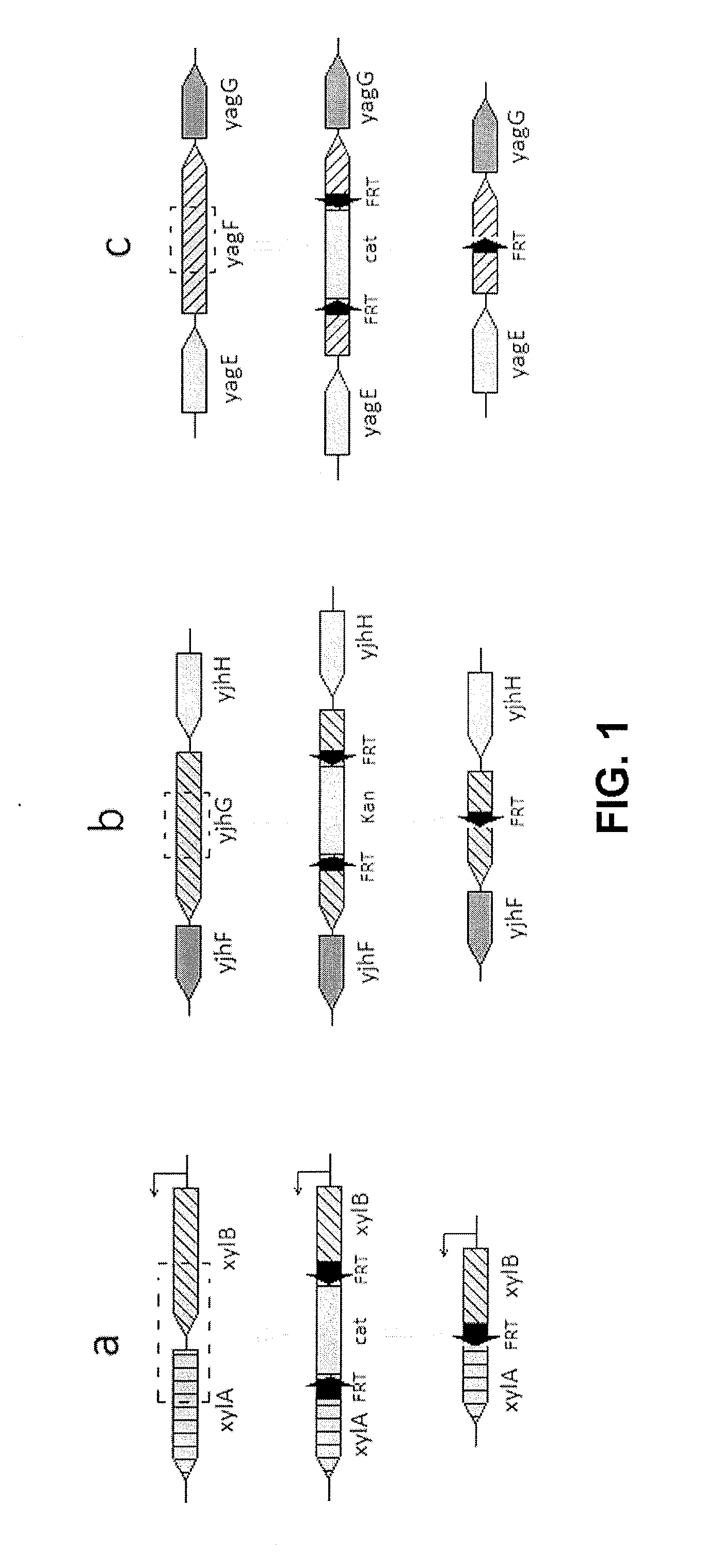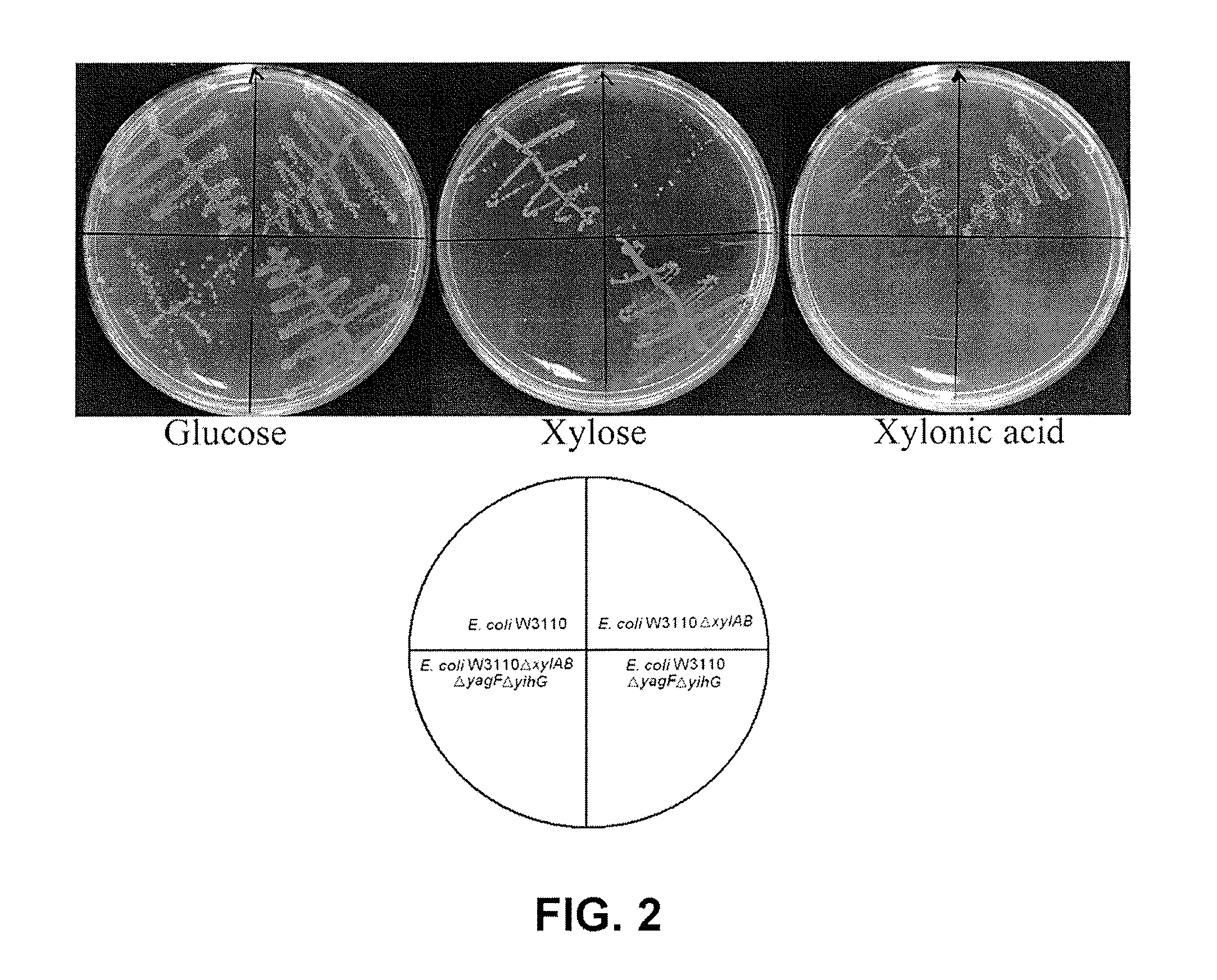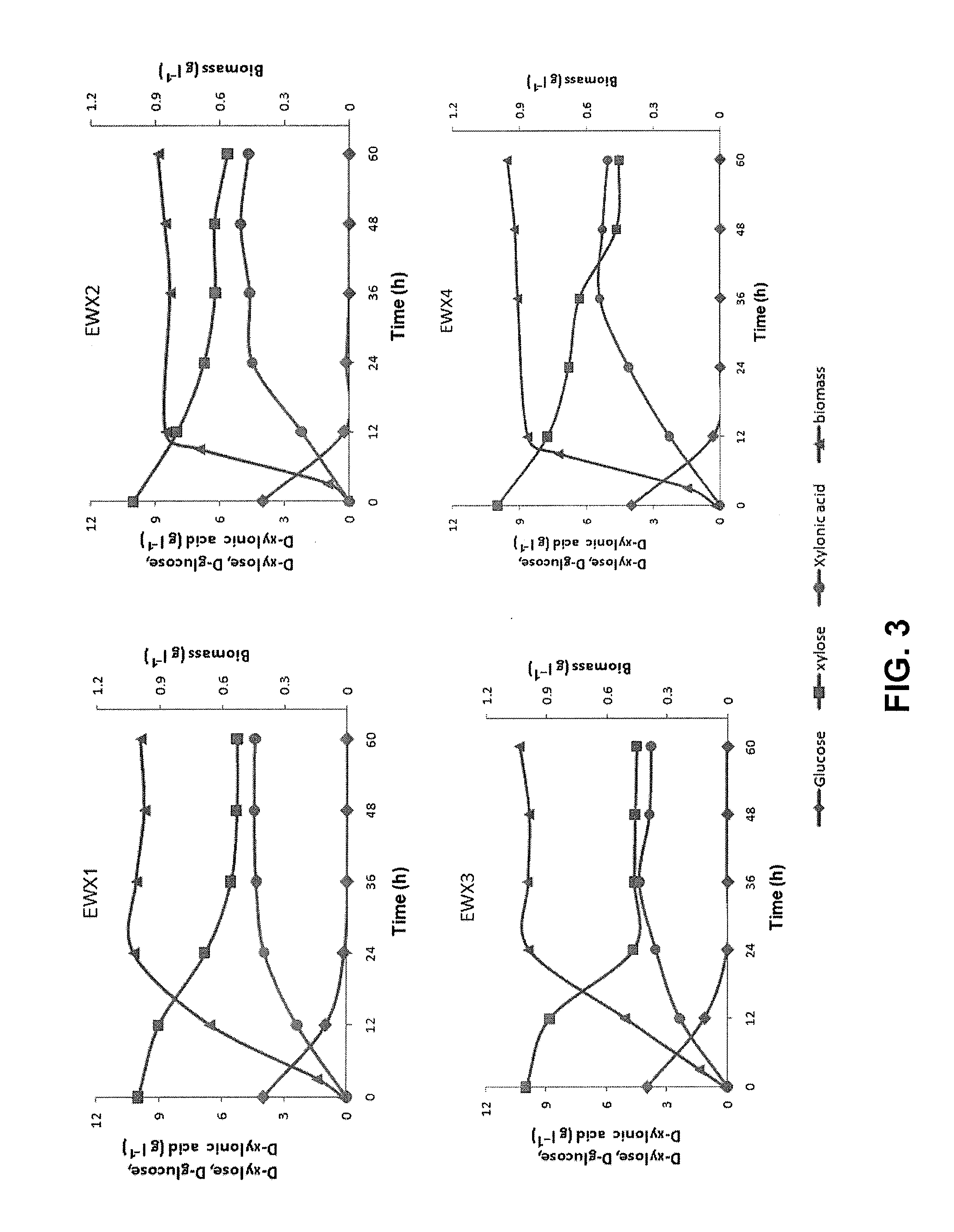Recombinant Escherichia coli producing D-xylonic acid from D-xylose and method for producing D-xylonic acid using the same
a technology of dxylose and escherichia coli, which is applied in the field of escherichia coli recombinant escherichia coli producing dxylonic acid from dxylose and method for producing dxylonic acid using the same, can solve the problems of uneconomical industrial scale production of dxylonic acid, no commercial production method of d-xylonic acid has been established, and the cost of pepton
- Summary
- Abstract
- Description
- Claims
- Application Information
AI Technical Summary
Benefits of technology
Problems solved by technology
Method used
Image
Examples
example 1
Strains and Strain Construction
[0028]First, a method for engineering E. coli producing D-xylonic acid from D-xylose will be described and then a method for producing D-xylonic acid by culturing the engineered E. coli will be described.
[0029]The method for engineering E. coli mainly comprises two procedures.
[0030]One is to disrupt specific genes in E. coli and the other is to introduce D-xylose dehydrogenase of C. crescentus.
[0031]First of all, the gene disruption procedure in wild type E. coli is described. As D-xylose and D-xylonic acid metabolizing involved genes among the chromosomal genes in wild type E. coli, xylA gene (SEQ ID. NO: 1) and xylB gene (SEQ ID. NO: 2) encode D-xylose isomerase and xylulose kinase, respectively. In addition, yagF gene (SEQ ID NO: 3) and yjhG gene (SEQ ID. NO: 4) encode D-xylonic dehydratase.
[0032]Gene inactivation strategy was applied to disrupt the chromosomal genes in wild type E. coli. Plasmid pKD46 was used as the Red recombinase expression vec...
example 2
Media and Culture Conditions
[0047]MOPS minimal medium was used for solid growth test and small scale culture. For solid growth test, plates containing MOPS salt and 4 g / L carbon source (glucose, xylose, or xylonic acid) were streaked with overnight cultures, and incubated at 37° C. for 2 days.
[0048]For small scale cultures, 1.25 mL of overnight inoculant was transferred into a 100 ml Erlenmeyer flask containing 25 ml liquid medium, 4 g / L D-glucose, and 10 g / L D-xylose, and incubated at 37° C. with 180 rpm agitation. 0.5 mM IPTG was added to induce xylose dehydrogenase expression when the optical density at 600 nm (OD600) reached 0.3 AU.
[0049]The strains were removed from the culture by centrifugation (2500 g for 10 minutes). D-xylonic acid containing the supernatant was then treated with activated carbon and vacuum concentrated from 1 L to 200 mL. EtOH (3:1, v / v) was added to the concentrate. After 12 hours at 4° C., the precipitated calcium xylonic acid was vacuum dried. The dried ...
example 3
Block of D-Xylose and D-Xylonic Acid Metabolic Pathways in E. coli W3110 in which Gene Disruption was Conducted
[0053]E. coli W3110 (EWM1, EWM2 and EWM3 strains) wherein gene disruption was performed and wild type E. coli W3110 were cultured in accordance with Example 1. The results are summarized in FIG. 2.
[0054]According to FIG. 2, the native D-xylose catabolic pathway was blocked by disrupting the D-xylose isomerase and D-xylulose kinase genes (xylA and xylB) in E. coli W3110 chromosome.
[0055]The endogeneous D-xylonic catabolic pathway was blocked by disrupting two D-xylonic acid dehydratase genes (yagF and yjhG) in order to prevent D-xylonic acid consumption.
[0056]Solid growth tests proved that the xylose metabolism-blocked strain W3110ΔxylAB became incapable of consuming D-xylose. On the other hand, the xylonic acid metabolism-blocked strain W3110ΔyagFΔyjhG has lost its capability of consuming D-xylonic acid. Further, it was found that the double-blocked strain W3110ΔxylAB ΔyagF...
PUM
| Property | Measurement | Unit |
|---|---|---|
| temperature | aaaaa | aaaaa |
| flow rate | aaaaa | aaaaa |
| temperature | aaaaa | aaaaa |
Abstract
Description
Claims
Application Information
 Login to View More
Login to View More - R&D
- Intellectual Property
- Life Sciences
- Materials
- Tech Scout
- Unparalleled Data Quality
- Higher Quality Content
- 60% Fewer Hallucinations
Browse by: Latest US Patents, China's latest patents, Technical Efficacy Thesaurus, Application Domain, Technology Topic, Popular Technical Reports.
© 2025 PatSnap. All rights reserved.Legal|Privacy policy|Modern Slavery Act Transparency Statement|Sitemap|About US| Contact US: help@patsnap.com



